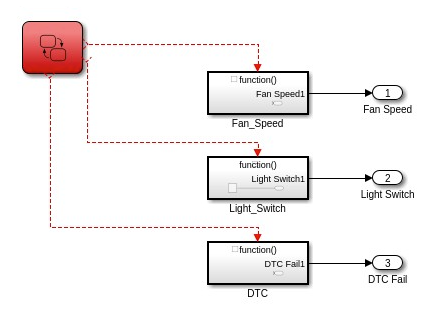Function-Call Subsystems in Simulink: The Most Overlooked Performance Booster
- Atul Abraham
- Oct 1
- 2 min read
Updated: Oct 20
If you’ve been using Simulink for a while, you’ve probably built models full of Enabled, If-Action, or Atomic Subsystems.They’re familiar, flexible, and widely used , but not always the most efficient choice.
There’s another option that quietly outperforms them in many cases:Function-Call Subsystems.
Many modelers overlook them, assuming they’re only for library developers or those who work heavily with Stateflow. But when used effectively, Function-Call Subsystems can make your models faster, cleaner, and easier to maintain.
The Core Idea
If your model already uses function-call lines : signals triggered by events, thresholds, or Stateflow charts, you’re already in the right territory.
Instead of relying on Enabled or If-Action subsystems that execute conditionally but still evaluate every cycle, a Function-Call Subsystem runs only when explicitly triggered.
That means zero unnecessary computations and fully event-driven behavior, the way complex systems should operate.
Why They’re Worth Using
1. Precise Execution- The subsystem runs only when its associated event occurs. No idle processing in between.
2. Better Simulation Performance - By avoiding unnecessary updates, your model runs faster and scales better with complexity.
3. Cleaner Design - Each function-call subsystem can be designed, tested, and reused independently , making the entire model more modular and easier to debug.
A Practical Example
Imagine a vehicle engine temperature monitoring system with three subsystems:
Cooling Fan Controller – activates above 90°C
Warning Light – triggers above 95°C
Data Logger – records data above 100°C
Without Function-Call Subsystems:All three subsystems are executed continuously, even when the engine is cool. This wastes simulation time and computation.


With Function-Call Subsystems:A simple Stateflow chart monitors the temperature and triggers each subsystem only when its threshold is crossed.Each block runs exactly when needed — improving both speed and clarity.


The Takeaway
Function-Call Subsystems aren’t just for advanced users, they’re for anyone building event-driven or modular models.
If a part of your model only needs to run sometimes, it shouldn’t be evaluated all the time.That’s where Function-Call Subsystems shine.
Next time you find yourself designing logic that depends on specific events or thresholds, give them a try. You’ll end up with a smarter, more efficient, and easier-to-read Simulink model.




Comments